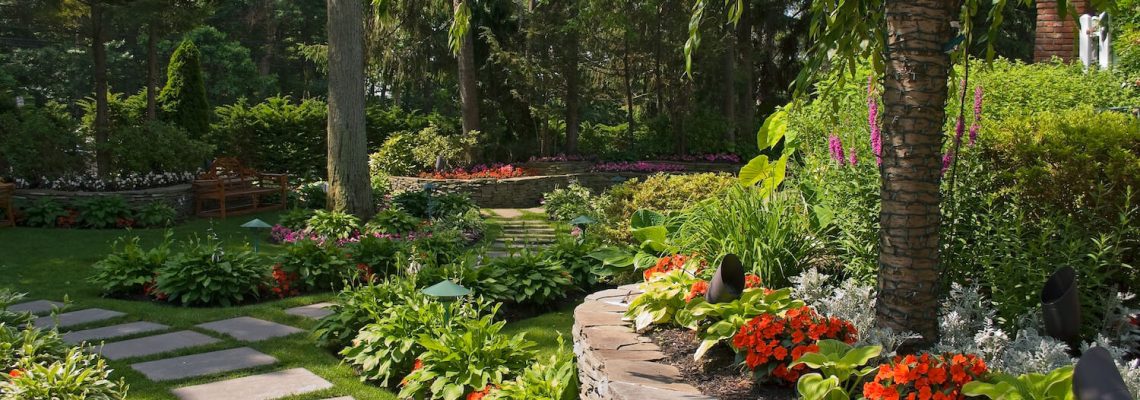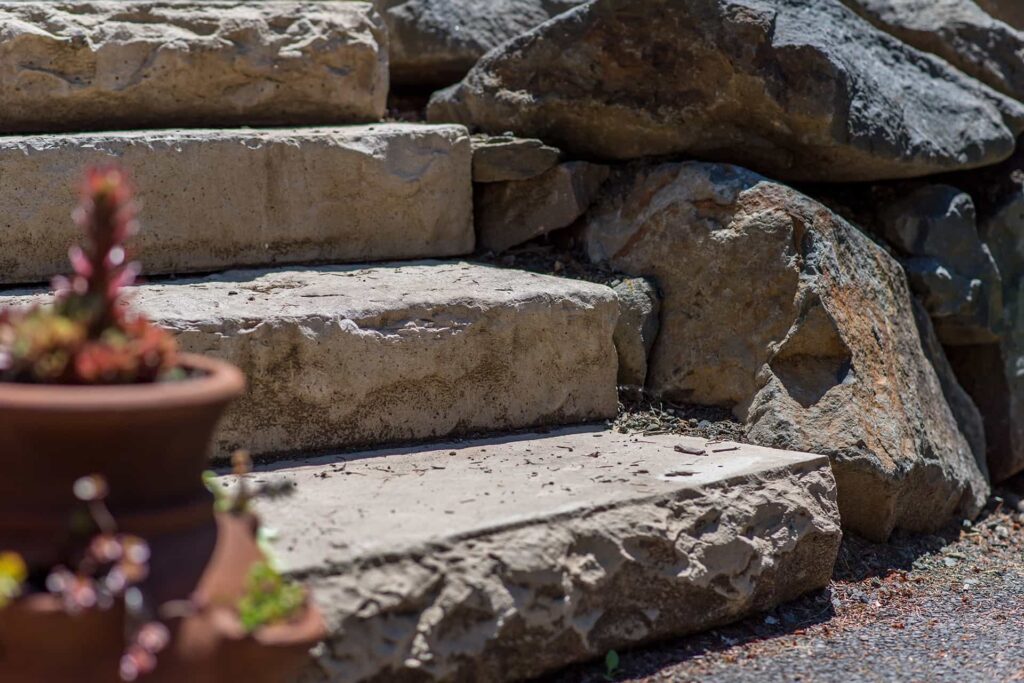Retaining walls are not merely functional structures; they are design elements that can transform landscapes and enhance the beauty of outdoor spaces. These versatile walls offer both practical and aesthetic benefits, providing support and stability to slopes while creating visually appealing terraces, seating areas, and garden beds. Whether used in residential gardens, commercial landscapes, or public spaces, retaining walls play a vital role in shaping the topography and maximizing the potential of outdoor areas. This article explores the advantages of retaining walls, their diverse applications, design considerations, and how they can elevate the overall aesthetic appeal of your outdoor space.
The Benefits of Retaining Walls
Retaining walls offer several key benefits that make them valuable additions:
- Erosion Control: One of the primary functions of retaining walls is to prevent soil erosion. By holding back soil and controlling water runoff, these walls help maintain the integrity of slopes and prevent land degradation. This is particularly important in hilly or sloping landscapes where erosion can be a significant issue.
- Structural Support: Retaining walls provide structural support to unstable or steep areas of land. They help redistribute the pressure exerted by the soil, preventing slope failure and land movement. Retaining walls enhance the stability of outdoor spaces, making them safer for both people and structures.
- Functional Terracing: Retaining walls create level terraces on sloped terrain, allowing for more usable space in outdoor areas. These terraces can be used for various purposes, such as seating areas, patios, gardens, or play spaces. By maximizing usable space, retaining walls enhance the functionality and accessibility of the landscape.
- Visual Appeal: Retaining walls can significantly enhance the aesthetic appeal of outdoor spaces. They provide a sense of structure, define different areas, and create visual interest. Retaining walls can be constructed using various materials, shapes, and colors, allowing for creative design possibilities that complement the overall landscape design.
- Soil Management: Retaining walls can be designed with appropriate drainage systems, ensuring proper water management and preventing water accumulation behind the walls. This helps maintain the health of plants and vegetation in the landscape and prevents water-related issues such as soil saturation or excessive runoff.
Applications of Retaining Walls
Retaining walls have a wide range of applications in various outdoor settings. Some common applications include:
- Residential Landscapes: In residential gardens, retaining walls are often used to create terraced areas for planting flowers, vegetables, or herbs. They can also be employed to level uneven yards, creating flat spaces for outdoor living areas, swimming pools, or play areas. Retaining walls can even be used to define pathways or create boundaries between different sections of the garden.
- Commercial Landscapes: Retaining walls play a significant role in commercial landscapes, such as shopping centers, resorts, or office complexes. These walls can be used to create attractive garden spaces, seating areas, or outdoor dining spaces. Retaining walls can also be incorporated into the design of entranceways, providing a grand and welcoming aesthetic.
- Public Spaces: Retaining walls are commonly found in public spaces such as parks, plazas, and recreational areas. They help shape the topography of the space, creating multi-level seating areas, amphitheaters, or raised platforms for performances or events. Retaining walls in public spaces can also be adorned with public art, murals, or greenery, adding to the overall appeal and character of the area.
- Roadways and Highways: Retaining walls are crucial in road and highway construction. They provide structural support to embankments and cut slopes, preventing soil erosion and landslides. Retaining walls along roadways can also enhance the visual appeal of the infrastructure, creating a more aesthetically pleasing environment for drivers and pedestrians.
- Waterfront Landscapes: Retaining walls are commonly used in waterfront landscapes, such as lakesides or coastal areas. They help control erosion along the shoreline, create level areas for waterfront activities, and prevent land loss due to wave action or water currents. Retaining walls in waterfront settings can be designed to blend seamlessly with the natural surroundings, creating a harmonious and functional landscape.
Design Considerations for Retaining Walls
Designing retaining walls requires careful consideration to ensure functionality, structural integrity, and aesthetic appeal. Here are some key design considerations:
- Materials: Retaining walls can be constructed using a variety of materials, including concrete blocks, natural stone, brick, timber, or even modular systems. The choice of materials depends on factors such as the desired aesthetic, budget, and the specific site conditions. Each material has its own unique characteristics, durability, and maintenance requirements.
- Height and Slope: The height and slope of the terrain will influence the design and construction of the retaining walls. Higher walls may require additional reinforcement or engineering considerations to withstand the pressure exerted by the soil. The slope of the land also affects the angle of the wall and the need for proper drainage systems.
- Drainage: Proper drainage is crucial for the long-term stability and performance of retaining walls. The design should incorporate appropriate drainage systems to redirect water away from the wall and prevent hydrostatic pressure buildup. This can include perforated pipes, weep holes, or gravel backfill behind the wall.
- Structural Engineering: For taller or more complex retaining walls, it is advisable to consult with a structural engineer. They can assess the specific site conditions, calculate the required load-bearing capacity, and provide recommendations for reinforcement or additional support systems if needed.
- Aesthetic Considerations: Retaining walls offer an opportunity to enhance the visual appeal of outdoor spaces. Consider the overall landscape design and choose a wall style, color, and texture that complements the surroundings. Incorporating curves, terracing, or incorporating plants and greenery can further enhance the aesthetic appeal of the retaining walls.
Enhancing Outdoor Spaces with Retaining Walls
Retaining walls have the power to transform outdoor spaces and create stunning visual impact. Here are some ways in which retaining walls enhance the overall appeal of outdoor areas:
- Terraced Gardens: Retaining walls can create tiered garden beds, allowing for a diverse range of plants, flowers, or even a vegetable garden. The terraced design adds depth and dimension to the landscape, creating a visually striking display of colors and textures.
- Defined Outdoor Living Areas: Retaining walls can define and separate different outdoor living spaces, such as patios, seating areas, or fire pits. By creating distinct zones, retaining walls provide a sense of structure and organization to the outdoor space, enhancing functionality and usability.
- Visual Focal Points: Retaining walls can serve as focal points in the landscape, drawing attention and creating visual interest. Incorporating design elements such as water features, cascading plants, or artistic accents on the walls can elevate their aesthetic appeal and make them stand out as unique design elements.
- Integrated Seating: Retaining walls can be designed with integrated seating areas, providing comfortable and functional seating options for outdoor gatherings or relaxation. These built-in seating elements blend seamlessly with the overall design, maximizing space utilization and adding a touch of elegance to the outdoor area.
- Hardscape Integration: Retaining walls can seamlessly integrate with other hardscape features, such as stairs, pathways, or retaining wall caps. This integration creates a cohesive and harmonious design, tying together different elements of the landscape and elevating the overall aesthetic appeal.
Professional Design and Installation
To ensure the functionality, durability, and aesthetic appeal of retaining walls, it is advisable to engage professional services for design and installation. Professional landscape designers and contractors have the expertise and experience to create customized retaining wall solutions that meet your specific needs and site conditions.
Working with professionals offers the following landscape benefits:
- Site Assessment: Professionals assess the site conditions, including soil composition, slope stability, drainage patterns, and any potential challenges. This assessment informs the design process and ensures that the retaining wall is engineered to withstand the unique conditions of the landscape.
- Design Expertise: Landscape designers consider both the functional and aesthetic aspects of the retaining wall design. They can create designs that seamlessly integrate with the surrounding landscape, enhancing its natural beauty and overall visual appeal.
- Proper Engineering: Depending on the height and complexity of the retaining wall, structural engineering may be required. Professionals collaborate with engineers to ensure that the wall meets the necessary load-bearing requirements and complies with local building codes and regulations.
- Quality Construction: Professional contractors have the necessary skills, equipment, and materials to construct retaining walls to the highest standards. They follow best practices in construction techniques, ensuring proper drainage, adequate reinforcement, and long-term stability.
- Long-Term Maintenance: Professionals can provide guidance on the proper maintenance of retaining walls to ensure their longevity and performance. They can offer advice on routine inspections, repairs, and necessary upkeep to protect your investment and the integrity of the retaining wall.
By engaging professionals for the design and installation services of retaining walls, you can have peace of mind knowing that your outdoor space will be transformed with a functional, visually appealing, and enduring feature.
Conclusion
Retaining walls offer numerous advantages and design opportunities for enhancing outdoor spaces. They provide structural support, control erosion, and create functional terraces, all while adding visual appeal and character to landscapes. Whether in residential gardens, commercial landscapes, or public spaces, retaining walls can transform the topography and maximize the potential of outdoor areas. With careful design considerations, choice of materials, and integration with the overall landscape design, retaining walls can elevate the aesthetic appeal and functionality of outdoor spaces, creating beautiful and inviting environments for relaxation, entertainment, and connection with nature.


